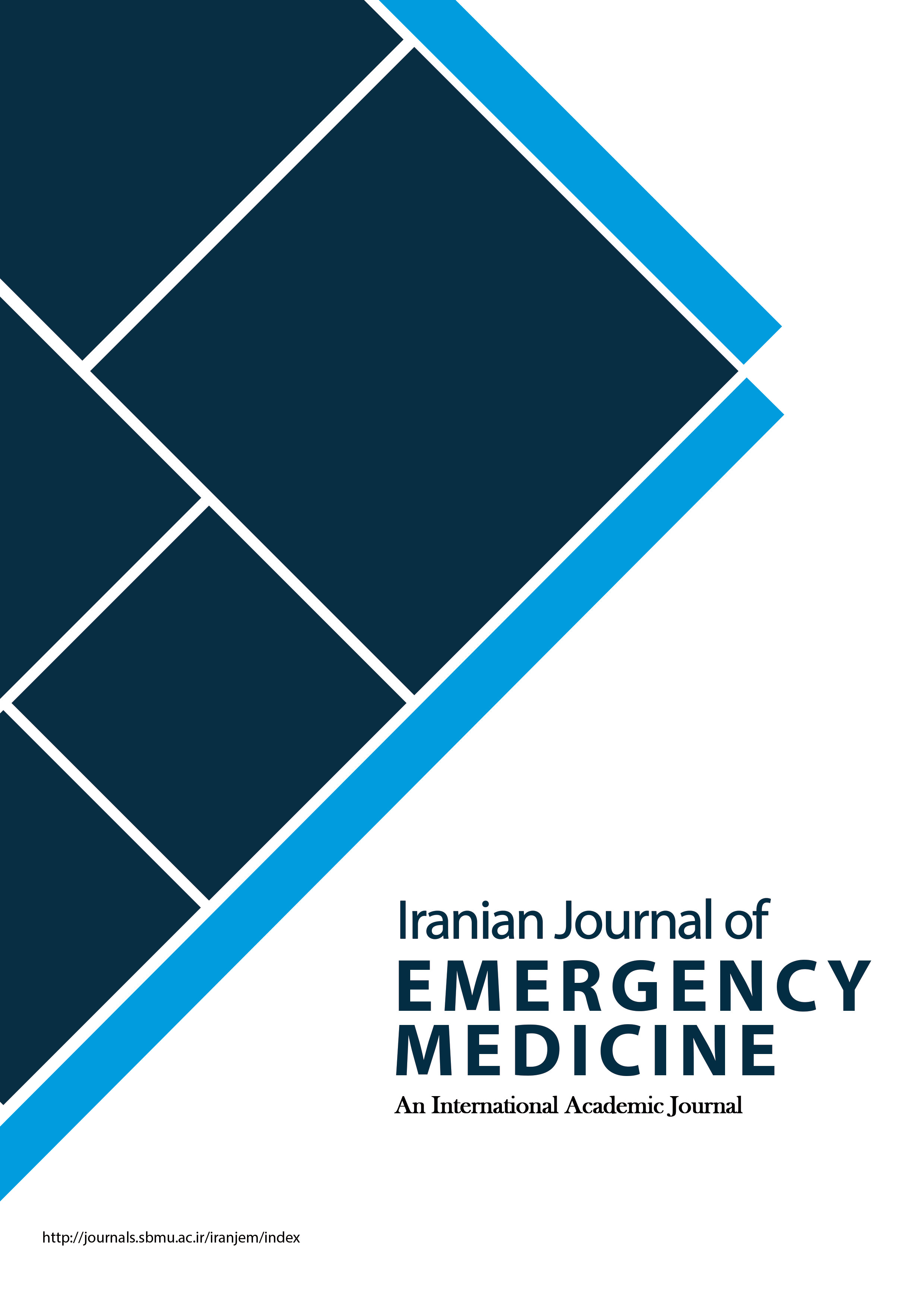Clinical Practice Guidelines; a Strategy to Improve Health Care
Iranian Journal of Emergency Medicine,
Vol. 4 No. 1 (2017),
21 December 2016
,
Page 3-1
https://doi.org/10.22037/ijem.v4i1.13909
Abstract
Considering the high speed at which medical sciences are growing in this age and the increase in diseases with side effects, the pressure on health care system, physicians and health care staff has intensified. This has led health care managers to seek more appropriate ways for providing health care services. In recent years, establishing standard clinical practice guidelines (CPGs) has been increasingly considered for this purpose. Using CPGs has become an important part of treatment in emergency department. These protocols are the result of general consultations regarding special clinical diagnoses and subjects, which guide the physicians for better decision making and providing logical treatments for a disease. Success in establishing it increases the quality of health care by decreasing use of improper treatment and accelerating giving effective and valuable treatments. CPG is a general and systematic vision that helps health care providers to make logical and proper decisions regarding patients and the health care system and helps physicians in special conditions. These procedures have been determined based on studies and reliable evidence that consist of different conditions and treatment methods and finally reveal the best treatment method to us. CPGs usually consider algorithms, clinical techniques and treatment policies and can definitely improve in the future. Recent studies have shown that in countries that CPGs are followed effective changes have been made in improvement of population health. One of the most important aspects of using CPGs is controlling costs. Recommendations that are given in CPGs also consider legal aspects and therefore decrease the risk of error for physicians and other medical staff. Although there are many problems, even when using CPGs, but many legal and supervisory systems have accepted CPGs and believe that not using it will give way to making errors and will bring about legal arguments. In fact designing CPGs is a policy that will provide safety in health care system. Undoubtedly, CPGs are important elements for decision making in medicine and performing them, as seen in the results and statistics reported in other countries, decreases unnecessary and dangerous interventions in the treatment process, provides effective and proper decision making for the health care providers, and leads to reduced mortality and costs. A disciplinary panel should be designed for carrying out the protocol to guide all target groups and make the goal of the CPG clear. Special clinical goals and conditions should be covered in CPGs and desirable clinical reflections should be made clear. Strong and scientific evidence should be regularly reviewed.How to Cite
References
Kredo T, Bernhardsson S, Machingaidze S, Young T, Louw Q, Ochodo E, et al. Guide to clinical practice guidelines: the current state of play. International Journal for Quality in Health Care. 2016;28(1):122-8.
Agrawal P, Kosowsky JM. Clinical practice guidelines in the emergency department. Emergency medicine clinics of North America. 2009;27(4):555-67.
Turner T, Misso M, Harris C, Green S. Development of evidence-based clinical practice guidelines (CPGs): comparing approaches. Implementation Science. 2008;3(1):1.
Hollon SD, Areán PA, Craske MG, Crawford KA, Kivlahan DR, Magnavita JJ, et al. Development of clinical practice guidelines. Annual review of clinical psychology. 2014;10:213-41.
Hashemi B, Baratloo A, Forouzafar MM, Motamedi M, Tarkhorani M. Patient satisfaction before and after executing health sector evolution plan. Iranian Journal of Emergency Medicine. 2015;2(3):127-33.
Marcus CL, Chapman D, Ward SD, McColley SA, Herrerias CT, Stillwell PC, et al. Clinical practice guideline. Pediatrics. 2002;109(4):704-12.
Baratloo A, Maleki M. Iranian emergency department overcrowding. Journal of Emergency Practice and Trauma. 2015;1(2):39.
Eichhorst B, Hallek M, Dreyling M. clinical practice guidelines. Annals of oncology. 2010;21(5):v162-v4.
Fluck R, Kumwenda M. Clinical practice guidelines. UK Renal Association. 2011.
Twaddle S. Clinical practice guidelines. Singapore medical journal. 2005;46(12):681.
Grimshaw J, Thomas R, MacLennan G, Fraser C, Ramsay C, Vale Le, et al. Effectiveness and efficiency of guideline dissemination and implementation strategies. 2004.
Baratloo A, Rahmati F, Forouzanfar MM, Hashemi B, Motamedi M, Safari S. Evaluation of Performance Indexes of Emergency Department. Iranian Journal of Emergency Medicine. 2015;2(1):33-8.
Rosenfeld RM, Shiffman RN, Robertson P. Clinical practice guideline development manual, a quality-driven approach for translating evidence into action. Otolaryngology--Head and Neck Surgery. 2013;148(1 suppl):S1-S55.
- Abstract Viewed: 2611 times
- PDF (فارسی) Downloaded: 1367 times
- HTML (فارسی) Downloaded: 289 times



